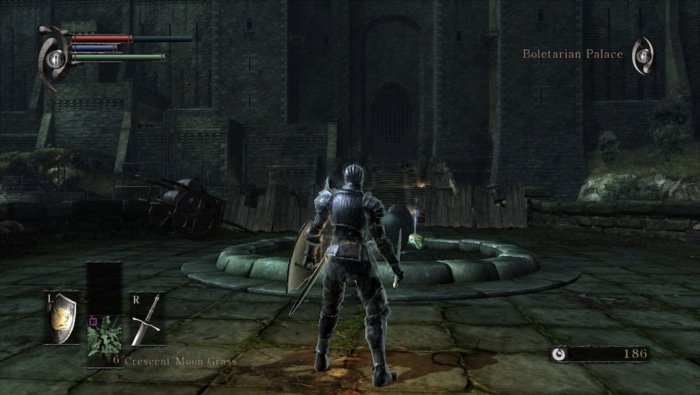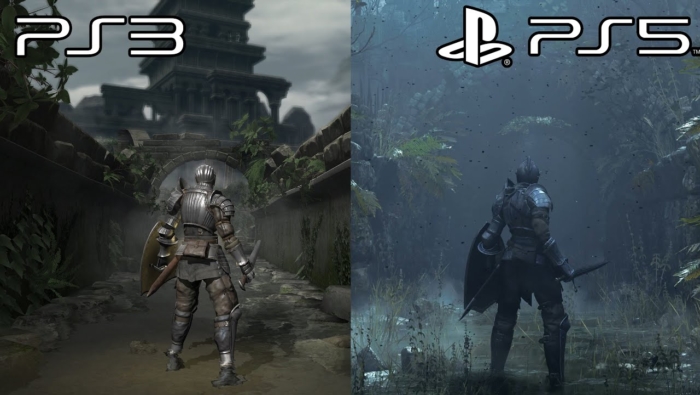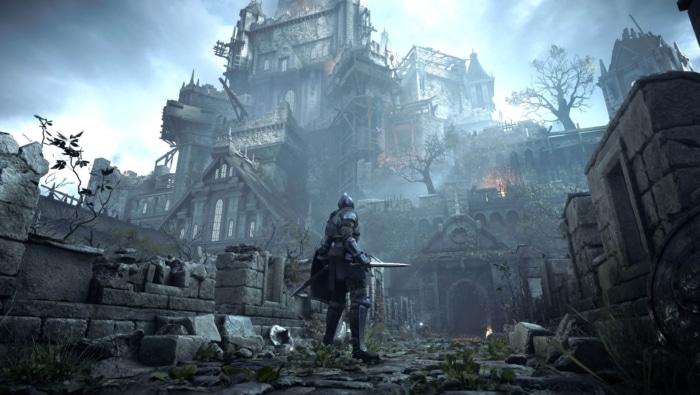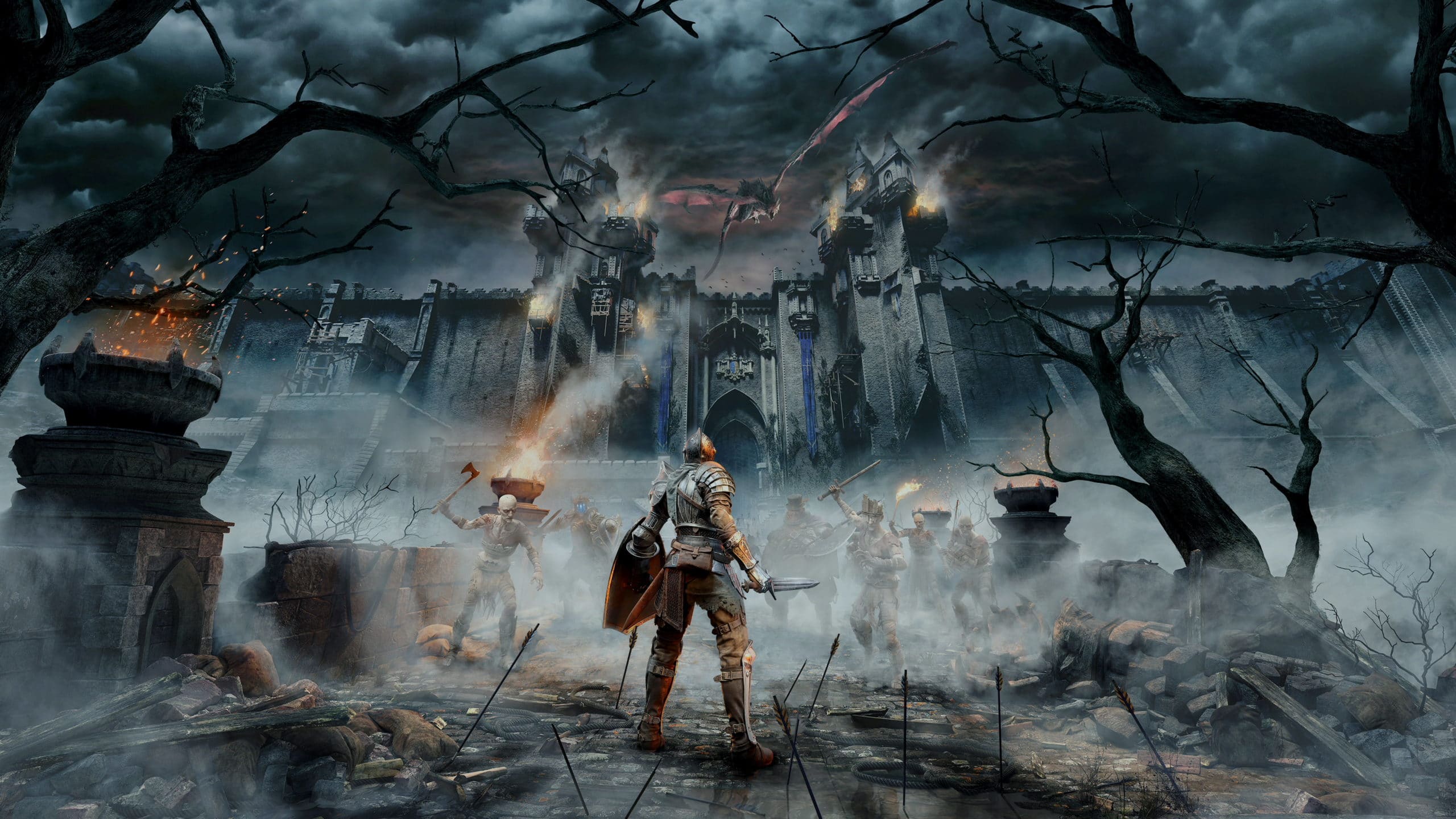Story of a Game: Demon’s Souls
Games have stories. Not just stories of how they were developed, but stories from the people that played them and the way they affected the gaming world.
In this series, Ultimate Gaming Paradise will bring you some of the stories of games, from headline-making triple-A titles to some indie masterpieces.
Adventuring ahead, welcome to the world of Demon’s Souls.
A Failed Game
Demon’s Souls was announced to the world at the Tokyo Game Show (TGS) 2008, and it was an immediate flop. So much so that the president of Sony, Shuhei Yoshida, moved to distance the company from the game they had invested in, refusing to publish it outside its tiny Japanese launch.
With such a shaky start, how did it come to be that this game even found an audience, and an international release?
To understand that, we have to go way back to the game’s roots.
The Impact of Fantasy
Somewhere out there is probably a study on exactly why so many people love fantasy—and not just any sort of escapism—but the classic genre of sword and sorcery fantasy; knights in shining armour, wizards throwing fireballs, and dragons flying over the top of castle parapets, always ready to wreak terror with their burning breath.
Whatever that study would find is something we all know in our hearts—fantasy and adventure are exciting.
Role-playing games grew from classic fantasy, and no matter how many innovative variations are tried, at the core, we come back here—to those knights, wizards and dragons.
Of all the games that have ever graced a computer or console, none have quite embraced those delightful tropes quite as much as Demon’s Souls. Here it all meets, and the result is art.
Role-Playing
There’s definitely something enticing about pretending to be someone else. Children do it with fancy dress from an early age. Many people continue throughout their lives, experiencing tabletop role-playing games, live-action events, amateur dramatics and even professional acting. It’s the great escape, to leave our difficult lives behind and become someone more powerful, an adventurer with a strong sword arm or array of magical skills.
Hidetaka Miyazaki, the man behind Demon’s Souls, is one of those fine people with a love of fantasy and role-playing. As a child, he grew up in a home where computer games were banned, so his love was fed through books and board games, and that magical place where the two met: Steve Jackson and Ian Livingstone’s Fighting Fantasy series of choose-your-own-adventure books.

If you have never experienced one of these masterpieces from the 80s, then you have definitely missed out. Wanting to crossover some role-playing elements with the excitement of a good fantasy novel, Jackson and Livingstone wrote a whole swathe of titles in the series. In each one, you would be presented with choices on where to go, whether or not to fight monsters or run away. Each choice led you to a different page of the book, flicking back and forth in a non-linear way until one of two things happened; you reached the end, or you died.
Many Fighting Fantasy books were hard. Of course, you could cheat, holding your finger at the page you were just at in case the path you picked led to your demise, but cheating at a solo activity has always been a little weak. On the other hand, for those willing to follow the rules and avoid the temptation to peek, the adventures within the pages were engrossing.
Bereft of access to a Famicom system that his peers undoubtedly had in their homes, Miyazaki wasn’t fed on a diet of Zelda and Final Fantasy but learned about orcs and bugbears through the environs of Firetop Mountain and the Forest of Doom.
From Software
In 2008, there was little chance that you had heard of From Software. There were fans of Armored Core who might have taken note of the developer in the back of their minds, but their main title, King’s Field, a precursor to Demon’s Souls, was limited to a Japanese audience with only a few hardcore fans bringing the game to the West.
King’s Field, a PlayStation One title that looks horribly dated today, shared many of the aspects that would find their way into Demon’s Souls. Notably, that it was hard and unforgiving, but Miyazaki, the passionate driving force behind Demon’s Souls, hadn’t even been part of From Software when the King’s Field games had been made.
He joined far later, quitting a better-paid job at Oracle to be a map developer and programmer at From Software after playing the award-winning Ico—and realising to himself that computer game development was where he needed to be.
Making an RPG for the Modern Gamer
By the latter half of the noughties, RPGs were a big thing in computer and console gaming. Titles like Final Fantasy and World of Warcraft were selling in vast numbers, and Western success stories like The Elder Scrolls were showing that there was room for a wide variety of systems, lore, and environments.
Sony came to From Software and poked and prodded to get a game that would rival Oblivion, the very successful fourth chapter in The Elder Scrolls series.
It was here that From Software came unstuck. Trying to bring their experience from King’s Field, with its particular structure and bleakness, and develop something marketable against Oblivion proved a struggle. Early prototypes of Demon’s Souls lacked in almost every way, and the game was considered a failure throughout the studio.
Miyazaki sensed an opportunity. Everything about this floundering new game appealed to him, from the fantasy aspects to the need for in-depth world-building and layers of lore, and he jumped at the chance to lead the team and bring his creativity to the failing title. There was little to lose, he reasoned; if he failed to make a success of the project, then no one would blame him—after all, it was already considered a failure.
He joined as a director and immediately stamped his mark, moving away from an Oblivion clone and taking a new viewpoint—quite literally. Miyazaki ditched the first-person perspective and turned the game into a third-person experience so that he could focus on gameplay elements, considering combat and exploration the key.
Mapless, Questless, Helpless
Miyazaki’s desire was to make a game for core gamers, not considering data and demographics in any way. He believed that he would achieve success if he remained true to what made the game good, not trying to pander to newer market conditions.
When consoles were new, games were hard. This can be tied to arcade traditions, where making a game difficult meant that people would have to put in more coins to continue, and thus the game would make more money. It was a balancing act, of course, as making the game too hard would just turn off the gamer and have them try out something else instead. Get it right, though, and persistent players would stand all day, feeding shining silver into the box in the hope of progressing just that little bit more.

As the decades passed, difficulty in games started to become a thing of the past. Allowing players the choice of how hard to set the game did bring a new audience of less-experienced gamers to the table, but Miyazaki felt it also lost some of the game’s essence.
Maps and quests, two other staples of the genre by this point, were again things the new Demon’s Souls director was happy to do without. Remembering the Fighting Fantasy books of his youth, he wanted to evoke that sense of exploration and discovery that is somewhat muted if you have something holding your hand throughout the process.
Demon’s Souls had its roots firmly in those older camps, providing an experience that was becoming lost with the softer modern sensibilities.
It’s All About Death
Death plays a part in many games, but in Demon’s Souls, it forms a central component. The very core of the story centres around death, with the bleak nature of a world that has suffered death on a massive scale. Beyond that, though, it is at the core of the mechanics that drive the game.
When you die, you lose the souls you have collected and are forced to try once more, carefully winding your way back through the level to reach the spot where you met your demise, hoping that you’ll get there before a mistake sees the stash sent to oblivion.
This repetitive gameplay is another nod to the old arcade games. Only by continuous replaying of a level could you learn the enemies’ movements enough to perfect your performance. The same is true in Demon’s Souls. It may look like a polished 3D world of its era, but in many ways, it plays like the 2D sprites of an 8-bit arcade classic. You can easily compare Demon’s Souls with R-Type, despite the obvious contrast of their genres.
With each repetition comes experience and improvement. Each run through sees you become a better Demon’s Souls player. Perhaps you learn the timing of the attacks more precisely, or you learn to perfect a parry at the right time, or you simply are aware of a dangerous section of the environment—whatever it is, it’s an addition to your personal growth that helps you eventually master this game. You die, you start again, you persevere and, eventually, you succeed.
From Software knew what they were doing here, and it wasn’t simply a mistake. The difficulty and the repetitive nature of the game help form the atmosphere they were after; an oppressive, dark and—as said earlier—bleak environment. It is a solitary experience, wandering around a hollow world that makes you feel something as you play.
Still, the development team knew that the difficulty, and the idea that death and failure should be considered a learning opportunity, was a hard sell.
“Honestly, we didn’t mention that aspect of the game when we did the presentations to Sony,” said Miyazaki. “We knew that members of the publisher would feel [that it was frustrating] and that they would ask us to change it. So, during the product concept presentation, I didn’t talk about it much.”
History shows that this period-unique aspect of Demon’s Souls helped its legacy.
A Trickle of Dedicated Fans
Remember that failure at the Tokyo Game Show? The distance Sony put between themselves and this under-appreciated game?
It is of no surprise. A gruelling, atmospherically-depressing game that was showcased alongside the vibrancy of Prince of Persia, Street Fighter IV and Bayonetta was bound to struggle. Add the difficulty that a brief interaction couldn’t get past and a setting that was so deep as to be impenetrable at first glance, and Demon’s Souls was fated to fail. Like the players who would later come to love it, however, the game shook off this death, stood up, and strode forward once more.
Word of mouth, a dedicated and passionate fanbase (if small), and some impressive YouTube videos cultivated a demand for an international release of Demon’s Souls that Sony failed to capitalise on, allowing Atlas USA (North America) and Bandai Namco (Europe) room to step in and seize the opportunity. Though the growth was still relatively small, Demon’s Souls found an international following and kick-started a series that has influenced much that has come since.
Playing Demon’s Souls
No one had really heard of Demon’s Souls. This niche game that promised unrelenting difficulty filtered its way slowly across to Western shores and struggled to get into homes and onto PS3s, but where it managed, it made a strong mark.
Playing Demon’s Souls was like being the edgy kid at the playground once more. Each day, you’d say to your friends, “have you tried this game?” and be met with confused stares and the unwarranted rejection of people scared of the unknown. A few would take up your offer, and the experience would spread, but many would stay away, unwilling to try out a game that had little marketing and which, whether they liked to admit it or not, could find them wanting.
“This game is hard” was always the opener, with constant references to the words “you died” that grew on the screen at the most frustrating moments. With all the other options to choose from, only those who considered themselves hard enough would even take a chance on it. Convincing other gamers to try out Demon’s Souls was like trying to get people to eat ghost chillis—pushing for a somewhat self-destructive show of machismo that’s possible, but normally only when somewhat intoxicated.
Where it found a place though, it stuck, and the fanbase grew.

Redefining Multiplayer
Demon’s Souls multiplayer was a completely different take on the online concept, providing a way to play with others while still keeping the feeling of it being a solo game intact. Miyazaki wanted people to slip into other players’ worlds to help (or hinder) them but didn’t want to become bogged down in communication between players. Inspired by an experience on a snowy hillside, where drivers collaborated and pushed each other up the hill without any direct conversation, the designer wanted to bring a similar feel to the game.
“I couldn’t stop the car to say thanks to the people who gave me a shove,” he said. “You could probably call it a connection of mutual assistance between transient people.”
Consequently, there are no chat boxes in Demon’s Souls and in the original, you can’t even choose whose world you jump into (the PS5 remake changes this slightly). Assistance is given as a ghost, silently, respectfully, and without the promise of reciprocation.
Or you can choose to be the bad guy, stealing into other worlds as a Black Phantom, intent on dispatching the host for your own pleasure.
A Massive Legacy
Demon’s Souls was followed by Dark Souls, a game given the right promotional budget and proper push by its publisher. Many more gamers have heard of Dark Souls than the game that came before it, but between them, they defined a genre and a decade on, gamers refer to some games as ‘Soul-likes’. Even outside the RPG spectrum, players will look at a potential game and ask, “Is this hard? I mean, is this Souls hard?”.
More than that, though, Demon’s Souls helped redefine the map for RPGs the world over, showing developers that they could make games that were more demanding, darker and deeper than they had been.
Reversing their trend on how proud they were of Demon’s Souls, in 2020, Sony came full circle, promoting Bluepoint Games and Japan Studio’s lovingly-redeveloped remake of Demon’s Souls as a PS5 launch title—whose review you can read here—proving that this little failure of a game from From Software had more to offer than anyone thought at the time—and still does.

